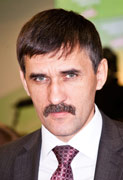  
| |||
|
| Current issue About edition Editorial board To authors Subscription Our authors Files |
|
May 2025, № 2 (246), pages 14-21doi: 10.25198/1814-6457-246-14Bykova A.S., Sakharova N.S., Enin A.V. 1. Afanasyev V. N., Eremeyeva N. S. and Lebedeva T. V. (2017) Statistical methodology in scientific research textbook for graduate students. Orenburg: OGU, 245 p. 2. Bitkovsky D. I., Motorko A. V. and Alalvan A. R. D. (2018) Methods of statistical data processing in problems of identification of dynamic systems. Juvenis scientia, №1, pp. 9-12. 3. Bolshakov A. A. and Karimov R. N. (2015) Methods of processing multivariate data and time series: textbook for universities. 2nd edition, stereotype. Moscow: Hotline-Telecom, 522 p. 4. Bykova A. S. and Sakharova N. S. (2022) “The self-image” university students in co-education. Global scientific potential, № 8(137), pp. 10-14. 5. Bykova A. S. (2024) Principles of info-communication skills development in students’ project activity. Vestnik of Orenburg State University, № 3 (243), pp. 11-16. 6. Bykova A. S. and Sakharova N. S. (2023) Structure of info-communication skills in the context of the development of supraprofessional competences. Vestnik of Orenburg State University, № 2 (238), pp. 6-11. 7. Buyul A. and Zцfel P. (2005) SPSS: the art of information processing. Translated from German. Moscow: DiaSoft, 602 p. 8. Kalinin A. G. (2015) Data processing by methods of mathematical statistics: a monograph. Chita: ZIP SibUPK, 106 p. 9. Krasina I. B. and Danovich L. M. (2015) Statistical methods of experimental data processing. Krasnoda: Kuban State Technological University, 244 p. 10. Lapteva E. V. and Portnova L. V. (2022) Statistical methods of research in economics: textbook (second edition, revised and supplemented). Volgograd: Iz-vod ‘Sphere’, 234 p. 11. Lomovskoy R. A. (2023) Statistical data analysis: methods and applications in scientific research. Actual researches, 2023, № 15-1(145), pp. 29-34. 12. Nasledov A. D. (2013) IBM SPSS 20 Statistics and Amos: professional statistical data analysis. Saint-Petersburg: Piter, 413 p. 13. Orlov G. M., Ignatyeva O. A., Vasin A. G. et al. (2021) Modern methods of data processing and analysis. SPb.: ITMO University, 147 p. 14. Pugach O. I. (2003) Potential of educational statistics as an element of education management. Vestnik of Orenburg State University, №4, pp. 178-182. 15. Katsko I. A. (2017) Statistical methods of data processing: a workshop. Krasnodar: KubGAU, 89 p. 16. Khristidis T. V. and Novashina M. S. (2023) Methods of mathematical statistics in pedagogical research: theory and practice of application.Vestnik MGUKI, № 2 (112), pp. 111-122. 17. Shashkov V. B. (2005) Automated calculation of Pearson’s criterion (mathematical statistics without statistical tables). Vestnik of Orenburg State University, № 9, pp. 172-174. 18. Shorokhova I. S., Kislyak N. V. and Mariev O. S. (2015) Statistical methods of analysis: textbook. Ministry of Education and Science of the Russian Federation, Ural Federal University. Federation, Ural Federal University. Ekaterinburg: Pub. Ural. un-ty, 300 p. 19. Jackson Sherri L. (2008) Research Methods and Statistics: A Critical Thinking Approach, Third Edition. Wadsworth, Cengage Learning, 448 p. 20. Maravelakis P. (2019) The use of statistics in social sciences. Journal of Humanities and Applied Social Sciences, Vol. 1., № 2, pp. 87-97. About this articleAuthors: Bykova A.S., Saharova N.S., Enin A.V.Year: 2025 doi: 10.25198/1814-6457-246-14 |
|
||||||||||||
| Current issue About edition Editorial board To authors Subscription Our authors Files |
|
© Электронное периодическое издание: ВЕСТНИК ОГУ on-line (VESTNIK OSU on-line), ISSN on-line 1814-6465 Зарегистрировано в Федеральной службе по надзору в сфере связи, информационных технологий и массовых коммуникаций Свидетельство о регистрации СМИ: Эл № ФС77-37678 от 29 сентября 2009 г. Учредитель: Оренбургский государственный университет (ОГУ) Главный редактор: С.А. Мирошников Адрес редакции: 460018, г. Оренбург, проспект Победы, д. 13, к. 2335 Тел./факс: (3532)37-27-78 E-mail: vestnik@mail.osu.ru |
1999–2025 © CIT OSU |















